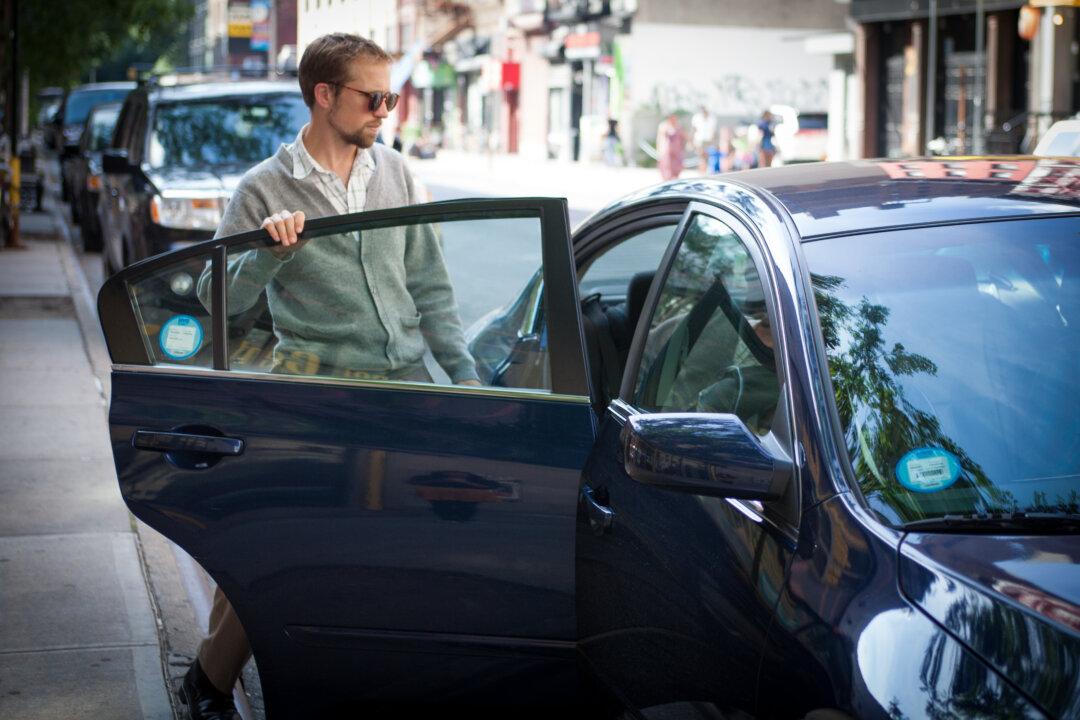NEW YORK—City Hall is looking to revive a highly contested dispatch rule that could limit apps like Uber’s and Lyft’s access to drivers.
With this rule, livery bases would need written agreements before one base’s driver works for another base. Council member Ydanis Rodriguez introduced the bill Nov. 25, as a measure to protect the livery industry.
Recently, the Taxi and Limousine Commission proposed the same rule initially because there were concerns as to whether drivers affiliated with one base would have insurance coverage while driving for another base. A representative from the Black Car Fund said if both bases the driver is driving for is part of the fund, the driver is covered. TLC ultimately dropped the rule.
Uber, Lyft, and the state attorney general indicated agreement requirements would be bad for the for-hire industry overall. Rodriguez said the intention was not to block technology companies like Uber, and that he did not think it would limit competition.
“We’re at a situation where everyone should be able to do fine,” said Rodriguez, who is the chair of the transportation committee. “There’s opportunity for everybody to do good.”
If City Council passes the bill, it would go into effect after 90 days and bypass the TLC board.
Controversy
Uber in the New York market functions as a black car service, and has well over 8,000 drivers affiliated with its own bases. Lyft functions the same way, but has closer to 20 drivers affiliated on its one base. It relies on hundred of drivers affiliated to other bases.
Many of those drivers are affiliated with Uber, which has made clear they will not enter into agreements to let those drivers work for Lyft, according to Lyft’s government relations manager David Estrada. Estrada spoke at a TLC hearing on the rule last month and said requirement would ultimately result in a monopoly.
If Lyft can’t use Uber drivers, and other bases don’t want to partner with Lyft, they will have to lure for-hire drivers away from small bases with big starting bonuses, Estrada said. He implied Uber, which is reportedly raising $1 billion to bring its valuation over $18 billion, would ultimately lure Lyft’s new drivers away from the company put everyone else out of business.
Livery industry representatives have said that their intention is not to block drivers from driving for Lyft or Uber and would enter into agreements, because the alternative is the monopoly situation Estrada described.
But some base owners said their hope is that legislation to require agreements would prevent Uber and Lyft from coming after their drivers, which is precisely the attorney general’s concern. It would limit competition by tying drivers to one base, he wrote in a letter early this month. Lyft drivers who protested this rule had said it would limit their mobility and income.
Livery Industry
Black car services and livery services differ in that livery cabs can take cash for rides while 90 percent of black car payments have to come from credit cards, and livery cabs need to agree on a price before the start of a ride.
Black cars and liveries also differ in that the former serves mostly corporate clients, while the latter tend to be small businesses owned by people who are also drivers. Liveries are also known as community car services, and are usually very local.
Derrick Warrington, a base owner of 20-plus years, has 50 drivers affiliated with his base. He says the relationship and trust he has with his local community cannot be replicated by a large corporation.
These are personal relationships built over the years, Warrington said. The other day an old woman needed a ride, but said she could only pay for half of the $10 trip. The driver took her anyway.
Warrington is reluctant to jump into an agreement to share drivers. “I would have to look into it, it depends on what the agreement says,” Warrington said. The legislation only requires bases come to an agreement, but base owners are free to determine their own terms. There is no penalty fee set yet for violating agreements or drivers working for other bases without an agreement.
The black car industry has all but been taken over by Uber, said Avik Kabessa, CEO of Carmel car service and president of the Livery Roundtable, and he does not want to see that happen with the livery industry. Base owners rallied behind Rodriguez Tuesday in hopes that the agreements will help preserve the industry.
There are drivers who came out in support of the legislation as well, because they have read the stories of Uber’s misleading $90,000 salary, and are skeptical of surge pricing. Jack Shi, a for-hire driver of two years, said it’s bad for drivers when so many of them accept low fares from Uber because it lowers the standard.
For-hire drivers are currently not supposed to be driving for both types of services but it happens.
For Uber and Lyft to legally use livery drivers, they would have to open a livery base, which has extensive on-site parking requirements Uber representatives said would be a hassle.
CORRECTION: TLC introduced the dispatch rules to ensure continuity of insurance coverage for drivers even when working for multiple bases. This was unclear in a previous version of the article. Epoch Times regrets this error.





